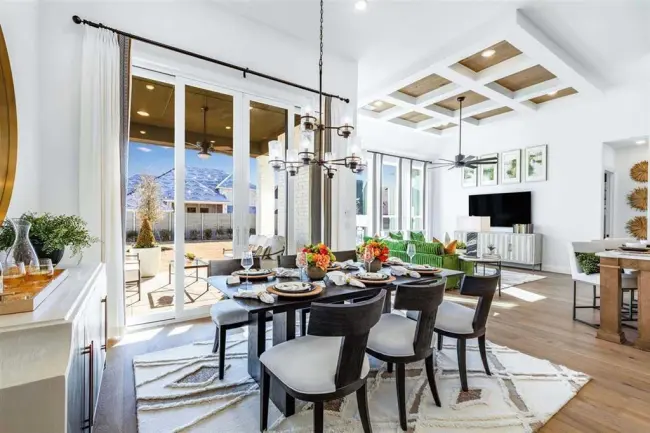Managing a commercial property is never just about collecting rent or ensuring the lights stay on. It’s about creating and maintaining an environment that attracts tenants, reassures clients, and signals professionalism from the first glance. One often-overlooked but highly effective way to achieve this is through investing in commercial painting services. Fresh paint is more than cosmetic. It’s a strategic decision that touches everything from property value to tenant retention.
First Impressions Influence Leasing Decisions
When prospective tenants tour a building, their judgement begins before they step inside. The condition of the exterior tells them whether the property is well cared for. Peeling paint, weathered surfaces, or fading colours can give the impression of neglect, even if the structure itself is sound. A fresh coat of paint not only revitalizes the façade but also signals that the property is actively maintained. For property managers competing in crowded markets, this difference can tip the scales in securing new leases.
Protecting Your Investment from Environmental Damage
Paint is not just decorative—it’s also protective. In Canada’s varied climate, commercial buildings face heavy rain, freezing winters, and hot summers, all of which can take a toll on exterior materials. High-quality commercial paints act as a barrier against moisture, UV rays, and temperature fluctuations. By preventing damage such as wood rot, rust, and surface deterioration, painting services reduce the need for costly structural repairs down the line. In this way, painting functions as preventive maintenance that preserves the long-term integrity of the building.
Enhancing Tenant Satisfaction and Retention
Tenants want more than functional space—they want an environment that feels modern and inviting. Interior painting plays a critical role in shaping that atmosphere. A well-chosen palette can make a workspace feel more energetic, a retail space more appealing, and a healthcare office more calming. When tenants are happy with their surroundings, they are more likely to renew leases and treat the property with care. For property managers, this translates into reduced turnover costs and steadier revenue streams.
Aligning Spaces with Brand Identity
Commercial buildings often house diverse tenants, each with their own brand identity. Painting allows property managers to customize shared spaces—such as lobbies, hallways, and conference areas—so they feel professional while still remaining neutral enough to support tenant branding. For large anchor tenants, managers may even coordinate colour schemes to reflect company values, creating a tailored environment that reinforces tenant satisfaction. This adaptability makes painting an essential tool in managing multi-use commercial spaces.
The Financial Case: Painting as an Asset, Not an Expense
It’s easy to think of painting as a cosmetic upgrade, but from a financial perspective, it’s much more. Studies in commercial real estate consistently show that aesthetic improvements lead to increased property values. A building that looks fresh and contemporary can command higher rental rates than one that appears dated. Painting also reduces vacancy time by making spaces more attractive to prospective tenants. When viewed through this lens, the cost of professional painting becomes an investment with measurable returns.
Safety and Compliance Standards Matter
Professional commercial painters understand that a project isn’t just about applying colour. It’s about safety and compliance. Certified teams follow strict protocols, including safe handling of materials, proper ventilation in occupied buildings, and adherence to building codes. This is especially important in high-traffic environments like office towers, healthcare centres, and retail complexes, where disruption and risk must be minimized. By hiring experienced professionals, property managers ensure that work is carried out efficiently, safely, and in line with legal requirements.
Sustainability and Eco-Friendly Practices
Modern painting services have evolved to meet the demand for sustainability. Low-VOC (volatile organic compound) and eco-friendly paints improve indoor air quality while reducing environmental impact. For property managers, this is not only an ethical choice but also a marketable one. Tenants increasingly value green practices, and demonstrating a commitment to sustainability can differentiate a property in competitive markets. Some jurisdictions also offer incentives for using environmentally responsible materials, further strengthening the business case.
Extending the Lifespan of Renovations and Upgrades
Painting is often the finishing touch on larger renovations, but it also helps extend the lifespan of those upgrades. For example, newly installed drywall, repaired siding, or refurbished wood surfaces benefit from a protective paint coating. Without it, the investment in those repairs risks being undone by exposure to the elements or daily wear and tear. Regular repainting keeps renovations looking fresh longer, reducing the frequency of major overhauls and maximizing ROI.
Choosing the Right Service Partner
Not all painting contractors are the same, and property managers must be selective. The right partner will provide clear timelines, detailed cost estimates, and professional project management. They will also have experience working in occupied commercial spaces, ensuring minimal disruption to tenants. Property managers should ask for references, review portfolios, and confirm insurance coverage before committing. A strong working relationship with a trusted painting provider becomes an ongoing asset in maintaining the property’s value.
A Smart, Long-Term Strategy
Painting may seem like a simple task, but for property managers, it represents a strategic tool. It protects the structure, attracts tenants, reinforces brand identity, and increases the property’s financial performance. Rather than treating painting as a cosmetic expense, property managers who prioritize it as part of their long-term maintenance plan position their buildings to stay competitive, appealing, and profitable in the years ahead.

